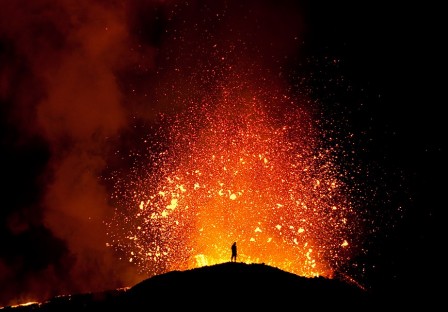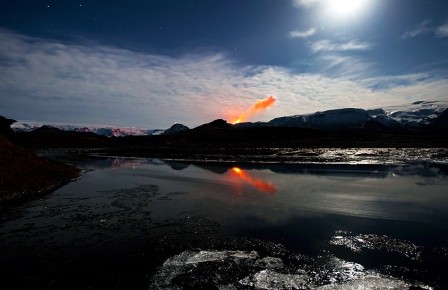Iceland: Volcano’s Wrath Matches The 2008 Financial Collapse
It is as if Mother Nature on April 14 in Iceland illustrated what will surely be Icelanders’ eruption of anger once they have the time to look into what is called Iceland’s Black Report. The ashes of Eyjafjallajokull volcano are likely to dissipate long before the ones still smoldering from Iceland’s financial collapse, created in a few years by the unsavory top executives of Iceland’s three biggest financial institutions.
On April 12, Iceland’s Special Investigation Commission released its more than 2000 pages report on the October 2008 collapse of Iceland financial system. The commission took one and half year to compile the report to elucidate what went so drastically wrong, so quickly inside what was supposed to be solid financial institutions, but turned out to be just houses of cards.
In early October 2008, following a period of extraordinary growth, the three largest Icelandic banks were taken into government custody. As the domestic economy had grown, at least on paper attracting a large flow of foreign investors, Iceland’s stock prices had soared with the three banks assets expanding from 100 percent of Iceland GDP in 2004 to 923 percent at the end of 2007. This Icelandic economic euphoria was crushed by the collapse Iceland’s three biggest banks.
The report tries to determine if the banks’ failure was a combination of bad luck and bad management, and which ones of the two was the key factor. Iceland three large banks-Glitnir, Kaupthing and Landsbanki- had apparently succeeded in tapping into international sources of profitability. Through mid-2008, they reported healthy profits, high capital ratios, and a very low rate of loan losses. For instance, the three banks reported total assets grew 34 percent during 2007, and their official average return on equity was supposed to be 19.7 percent. Did these apparently healthy banks fall prey to a worldwide economic collapse or did the banks top managements “cook the books” all along?
It appears that bad management was a much stronger factor than just bad luck. The very business models and lack of regulatory structure that drove the banking system to such a rapid expansion were destined to fail. The three big banks had opaque ownership, risky financing arrangements, and over-reliance on trading profits or stock collateral lending. As the banks expanded, they outgrew the Central Bank, and the government ability to regulate them or to provide support in the event of serious problems. With such business models, these institutions were headed for disaster, and were probably insolvent before October 2008.
“A review of the three banks’ lending processes and the limited supervisory oversight to which they were subject suggests that the banks made a sequence of poor decisions, particularly in their loans underwriting. The financial crisis certainly made it more difficult for them to obtain financing, but these difficulties had begun more than six months before Lehman’s failure caused world financial markets to freeze. Likewise, a larger Central Bank with more foreign currency reserves might have postponed their troubles. But the bankers and their regulators should have understood the Central Bank limited ability to help them.”
“The sub-prime financial crisis surely added pressure on the banks, particularly after Lehman Brothers failed in mid-September of 2008. However, the banks had ignored repeated warnings that their sizes and rapid expansion exposed them to great risks. It seems likely that they would have collapsed eventually, even without a worldwide financial crisis,” says the report.
To read a summary of the report click here.
Related Articles

















You must be logged in to post a comment Login